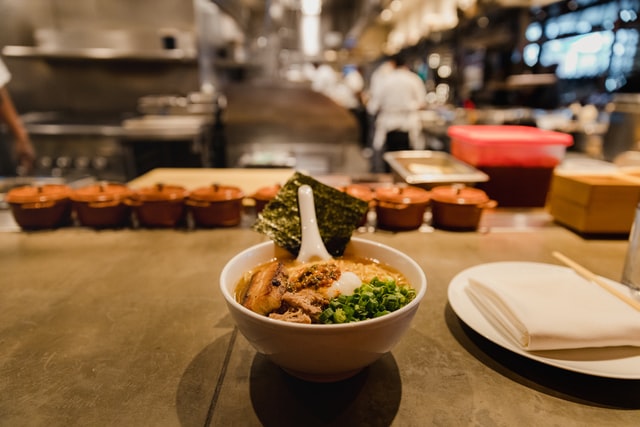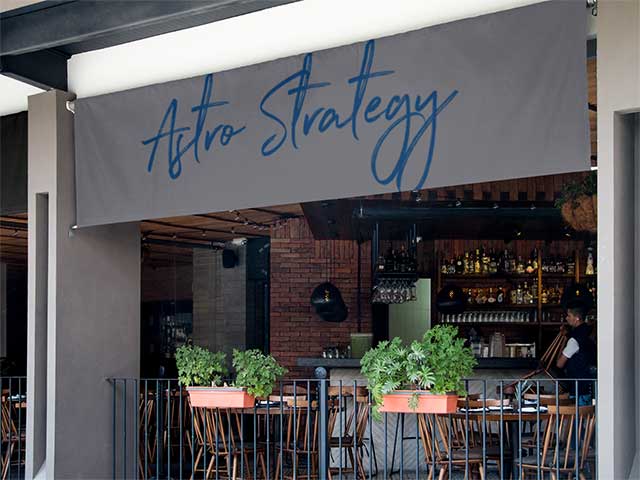Running a restaurant business in the USA can be a challenging task, especially when you consider the ever-changing trends and customer preferences.
In today’s highly competitive market, restaurant owners need to have a solid business strategy in place to stay ahead of the competition. The key to success lies in understanding your target audience, creating a unique brand image, and offering exceptional customer service.
I’ve worked with many successful restaurant owners who have implemented winning strategies to drive profitability and customer loyalty.
In this article, we will explore a winning business strategy for restaurant owners in the USA that will help you attract and retain customers, increase revenue, and build a loyal customer base.
Whether you’re a new restaurant owner, or you’ve been in the business for years, this guide will provide you with valuable insights on how to take your restaurant to the next level. So, let’s dive in and discover the secrets to achieving success in the highly competitive restaurant industry.
Table of Contents
Understanding the Importance of a Business Strategy for Restaurant Owners
As a restaurant owner, you have a vision for your business. You want to create a unique dining experience that stands out from the competition and attracts customers. However, without a solid business strategy in place, it can be challenging to achieve your goals. A business strategy is a roadmap that outlines the steps you need to take to achieve your objectives. It helps you identify your target audience, create a unique value proposition, and develop a marketing plan that resonates with your customers.
A business strategy also helps you analyze your competition and create a competitive advantage. By understanding the strengths and weaknesses of your competitors, you can identify areas where you can differentiate yourself and stand out in the market. A solid business strategy also helps you optimize your menu, pricing, and customer experience to drive revenue and profitability. Overall, a business strategy is essential for any restaurant owner who wants to achieve long-term success in the highly competitive restaurant industry.
Conducting Market Research to Identify Your Target Audience
The first step in developing a winning business strategy for your restaurant is to conduct market research to identify your target audience. You need to understand who your customers are, what they want, and what motivates them to choose your restaurant over others. To do this, you can use a variety of research methods, including surveys, focus groups, and online reviews.
Once you have a clear understanding of your target audience, you can start developing a value proposition that resonates with them. This value proposition should be unique and should differentiate you from your competitors. It’s important to focus on what makes your restaurant special and how you can provide a better experience than your competitors. This could include the quality of your food, the ambiance of your restaurant, or the exceptional service you provide.
Developing a Unique Value Proposition for Your Restaurant
Your value proposition is the unique benefit that your restaurant provides to your customers. It’s what sets you apart from your competitors and makes you stand out in the market. To develop a strong value proposition, you need to understand your target audience and what motivates them to choose your restaurant over others.
Your value proposition should be clear and concise, and it should communicate the unique benefits that your restaurant provides. For example, if you specialize in farm-to-table cuisine, your value proposition could be “We source our ingredients locally to provide the freshest, most delicious food possible.” Your value proposition should be incorporated into your marketing materials, including your website, social media profiles, and advertising campaigns.
Crafting a Strong Brand Identity and Marketing Plan
Your brand identity is the visual representation of your restaurant. It’s how your customers perceive you, and it plays an essential role in attracting and retaining customers. A strong brand identity includes your logo, color scheme, and overall design aesthetic. It should be consistent across all of your marketing materials, including your website, social media profiles, and advertising campaigns.
In addition to your brand identity, you need to develop a marketing plan that resonates with your target audience. This plan should include a mix of online and offline marketing tactics, including social media marketing, email marketing, and local advertising. You should also consider partnering with local businesses and influencers to promote your restaurant and increase your reach.
Analyzing Your Competition and Creating a Competitive Advantage
To create a competitive advantage, you need to understand your competition and identify areas where you can differentiate yourself. This could include offering a unique menu item, providing exceptional customer service, or creating a memorable dining experience. By analyzing your competition, you can identify gaps in the market and opportunities to stand out in the market.
One way to differentiate yourself is by offering a unique menu item that your competitors don’t offer. This could be a signature dish that is exclusive to your restaurant or a unique spin on a classic dish. You can also differentiate yourself by providing exceptional customer service. This includes training your staff to be friendly, attentive, and knowledgeable about your menu. Finally, you can create a memorable dining experience by focusing on the ambiance of your restaurant. This includes the lighting, music, and overall atmosphere of your restaurant.
Building a Strong Online Presence and Reputation
In today’s digital age, it’s essential to have a strong online presence and reputation. This includes having a website that is optimized for search engines, as well as a strong presence on social media platforms like Facebook, Instagram, and Twitter. You should also consider investing in online advertising to increase your reach and attract new customers.
In addition to your online presence, you need to focus on building a strong reputation through online reviews and ratings. Encourage your customers to leave reviews on platforms like Yelp and Google, and respond to both positive and negative reviews in a professional and courteous manner. A strong online reputation can help you attract new customers and retain existing ones.
Optimizing Your Menu, Pricing, and Customer Experience
To drive revenue and profitability, you need to optimize your menu, pricing, and customer experience. This includes offering menu items that are both profitable and popular, as well as setting prices that are competitive with other restaurants in your area. You should also focus on providing exceptional customer service, including training your staff to be knowledgeable about your menu and attentive to your customers’ needs.
Another way to optimize your customer experience is by implementing a loyalty program. This program can reward your customers for their loyalty and encourage them to return to your restaurant. You can also offer specials and promotions to attract new customers and drive revenue.
Leveraging Technology and Data Analytics to Drive Growth
In today’s digital age, it’s essential to leverage technology and data analytics to drive growth. This includes using a point-of-sale system that tracks your sales and inventory, as well as data analytics tools that provide insights into your customers’ behavior and preferences. By analyzing this data, you can make informed decisions about your menu, pricing, and marketing strategies.
You can also leverage technology to improve your customer experience. This includes implementing online ordering and delivery services, as well as offering mobile payment options. By leveraging technology, you can streamline your operations and provide a more convenient experience for your customers.
Measuring Success and Adapting Your Strategy Over Time
Finally, it’s essential to measure the success of your business strategy and adapt it over time. This includes tracking your revenue and profitability, as well as monitoring your online reputation and customer feedback. By analyzing this data, you can make informed decisions about your business strategy and make adjustments as needed.
It’s also important to stay up-to-date with industry trends and customer preferences. This includes monitoring social media platforms and online review sites to stay informed about what your customers are saying about your restaurant and your competitors.
Conclusion: Putting Your Strategy into Action and Achieving Long-Term Success
In conclusion, a winning business strategy is essential for any restaurant owner who wants to achieve long-term success in the highly competitive restaurant industry. By understanding your target audience, creating a unique value proposition, and developing a strong brand identity and marketing plan, you can attract and retain customers, increase revenue, and build a loyal customer base.
By analyzing your competition, optimizing your menu, pricing, and customer experience, and leveraging technology and data analytics to drive growth, you can stay ahead of the competition and achieve your business goals. Finally, by measuring your success and adapting your strategy over time, you can ensure that your restaurant remains competitive and successful in the years to come. So, put your winning business strategy into action and achieve long-term success in the highly competitive restaurant industry.


































